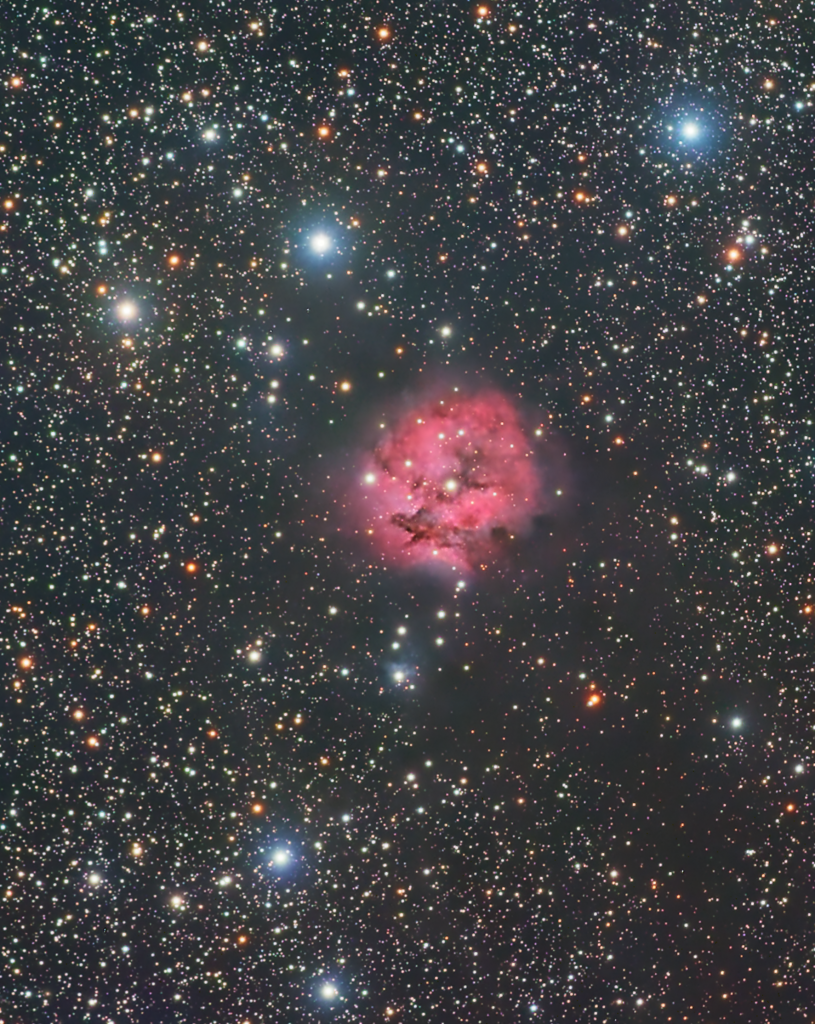

I wanted to do a comparison between the Seestar and the The Rig. I picked the Cocoon Nebula because it is in a rich star field, and has some good color to highlight the difference. Details on each picture below:
Seestar Image (left):
RGB – 640 x 10″
Dates – September 12, 2024, October 4, 2024
The Rig Image (right):
Luminance – 24 x 300″ 1×1 Binning
Blue – 15 x 120″ 2×2 Binning
Green – 15 x 120″ 2×2 Binning
Red – 15 x 120″ 2×2 Binning
Dates – October 3-4, 2024
I tried to match up the FOV by cropping each picture to give a better comparison. Both images were processed in Pixinsight using similar worklows.
Some of the obvious differences is the richness of color in the picture from the rig image. This is due to the RGB frames vs. the RGB One-Shot-Color frames in the Seestar image. The rig has more detail and less noise because of the use of the Luminance frame and the more sensitive chip. The noise is less apparent because of the use of the cooler to keep the chip at a particular temperature. There is definitely a noticeable difference.
I am not trying to diminish what can be done with a smart telescope. What I am trying to say is an astroimaging rig can cost upwards of 6 to 12 times the cost of a smart telescope. For $500, the Seestar image gives excellent results when post-processed.
With an astroimaging rig, there is a learning curve to make sure everything is working correctly. It takes longer to set up. I go through a “pre-flight” checklist when setting up the rig and if you forget a key piece of the rig (been there, done that) your night is wasted. With a smart telescope, you are up in minutes taking photos.
One final point: the skills learned post-processing smart telescope images can be applied if one desires to get a bigger astroimaging rig. So investing in a smart telescope and the skills learned for post-processing can be used again if one chooses.

Thank you for showing the difference. Post processing for the Seestar telescope is on my “skills to learn next” list.
You are welcome! I have a detailed tutorial on how I do post-processing with the Seestar (and I use similar techniques for my imaging rig). 73 de N8XE.. Jason